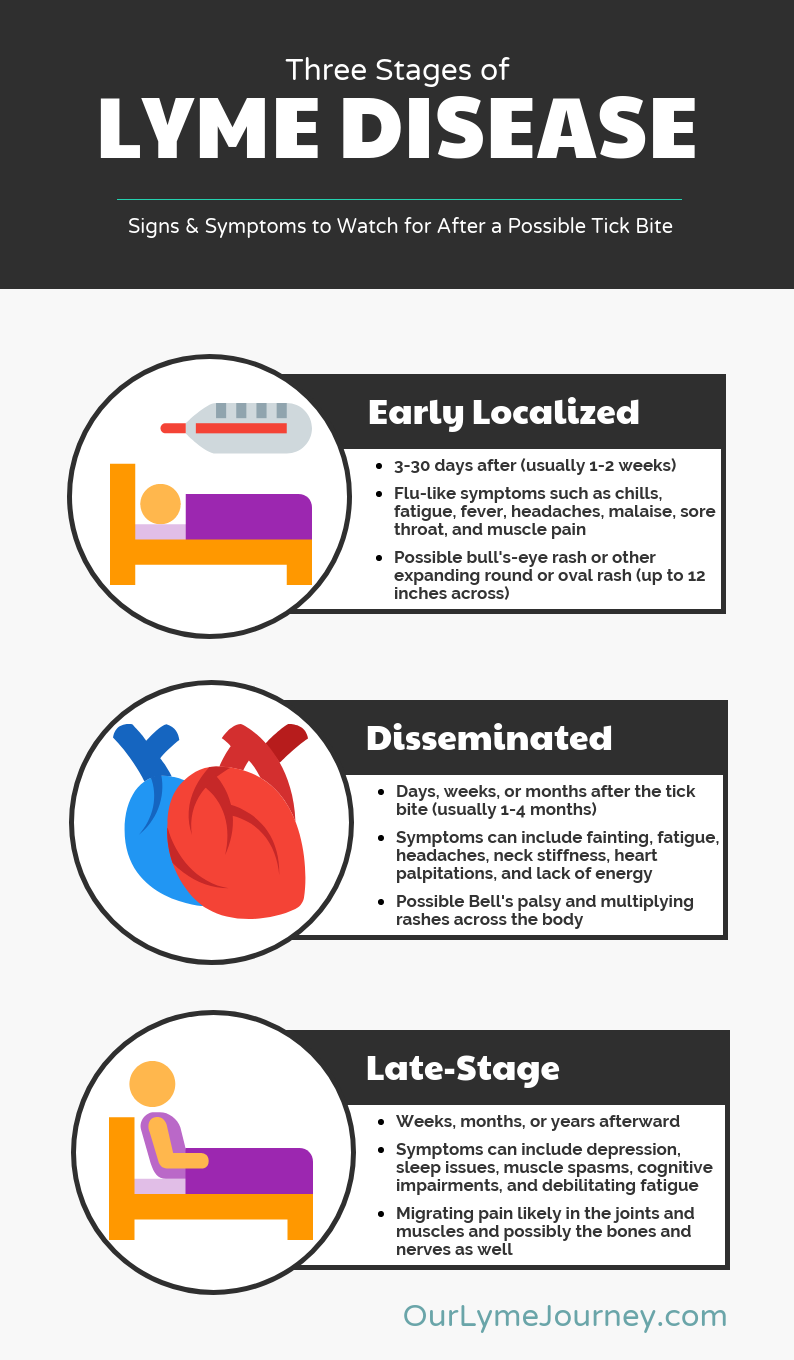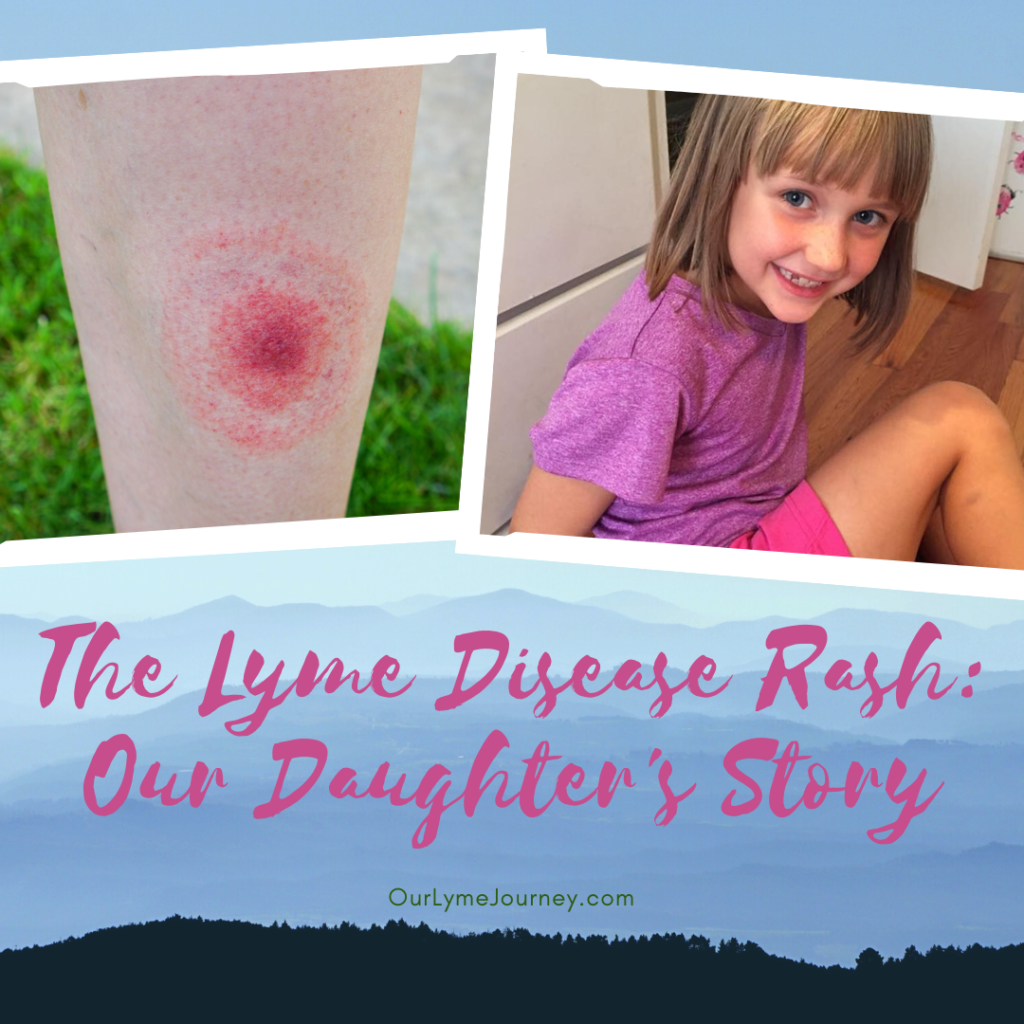The Centers for Disease Control and Prevention estimates 300,000 people contract Lyme every year. And that’s just in the U.S.! Unfortunately, Lyme disease awareness is still low.
After you’re bitten, your reaction could serve as your earliest warning. But most people don’t have symptoms from the tick bite itself. So, what signs and symptoms of Lyme disease should you be watching for?
Stage One: Early Localized
The first signs and symptoms of Lyme appear between three and thirty days after the tick bite. By then, you may not even make the connection between hiking or yard work and your illness.
Early symptoms tend to be flu-like. You may experience chills, fatigue, fever, headaches, malaise, sore throat, or muscle pain. You might notice a bull’s-eye rash or other expanding round or oval rash.
To read our daughter’s story with early localized Lyme, click here.
Stage Two: Early Disseminated
Days, weeks, or months after the tick bite, untreated Lyme can spread to other parts of your body. You may experience fainting, fatigue, headaches, neck stiffness, heart palpitations, and lack of energy. Clearer signs may include Bell’s palsy or multiplying rashes.
Stay tuned for my dad’s story with early disseminated Lyme!
Stage Three: Late Disseminated
Weeks, months, or years after the tick bite, untreated Lyme can progress to the late stage. You may experience depression, sleep issues, muscle spasms, cognitive impairments, and debilitating fatigue.
By that point, you will likely have migrating pain in your joints and muscles. You may also face migrating pain in your bones and nerves.
To read about my battle with late-stage Lyme, click here.

Lyme Disease Awareness: Advocating for Yourself
Knowing the symptoms of each stage of Lyme is crucial. After all, that knowledge can help you get diagnosed and treated as early as possible. So, let’s say you’ve discovered you have some of the signs and symptoms of Lyme disease. Now what?
Turn first to your primary care provider. After all, they know you—hopefully—and they’re usually covered by insurance. Unfortunately, many don’t know as much about tick-borne diseases as you might expect. So, we need to learn how to advocate for ourselves. Click here to learn how!





Pingback: Tick Bite Rash: A Blessing in Disguise - Never Alone
Pingback: Which Lyme Tests Should I Ask My Doctor to Order? - Never Alone
Pingback: Primary Care: How to Advocate for Yourself - Never Alone
Pingback: Lone Star: My Dad Got Bit by a Tick - Never Alone
Pingback: After a Tick Bite, Watch for These Symptoms - Never Alone
Pingback: Stage 2 Lyme Disease: My Dad's Story - Never Alone